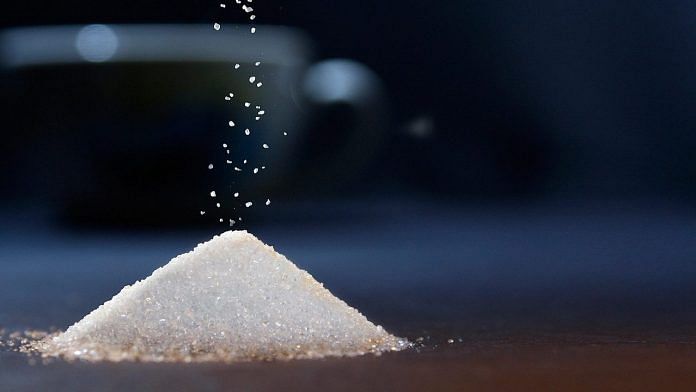New Delhi: The International Diabetes Federation (IDF) has recommended that the 1-hour post-load plasma glucose (1-h PG) test is a more sensitive and practical method to screen for people at increased risk of developing diabetes.
This test, it says in a statement this month, should be adopted to detect the people with prediabetes for early diagnosis and intervention.
IDF is an umbrella organisation of over 240 national diabetes associations worldwide and issues guidelines periodically related to diagnosis and management of the metabolic condition.
Prediabetes, which is now referred to as intermediate hyperglycemia, is a state between normal glucose regulation and Type 2 diabetes — a condition when the body either doesn’t produce enough insulin, or resists insulin, altering the way the body processes blood sugar or glucose.
ThePrint explains what 1-hour plasma glucose test is all about and what medical experts have to say regarding this method.
Ticking time bomb
A study conducted last year by the Madras Diabetes Research Foundation (MDRF) in collaboration with the Indian Council of Medical Research (ICMR) and the Union health ministry had shown that nearly 15.3 percent or 136 million people in India are prediabetic.
It also showed that 101 million people or 11.4 percent of the country’s population suffer from diabetes.
People with prediabetes, as defined by current diagnostic criteria and characterised by impaired fasting glycaemia and impaired glucose tolerance (IGT), mostly progress to Type 2 diabetes.
However, evidence shows that this can be prevented by lifestyle modification and medications in people with IGT, which is mostly diagnosed by 2-h PG during a 75-gram oral glucose tolerance test (OGTT), a gold standard for detecting diabetes.
OGTT is a more sensitive test, meaning it results in very few false negative results, as compared to HbA1c test, another test often used to screen diabetes which measures glycated hemoglobin, a form of hemoglobin that is chemically linked to a sugar.
Sometimes, doctors also indicate only the fasting plasma glucose (FPG) test to measure blood glucose level at a single point in time, but it can result in false negatives.
Chennai-based diabetologist and MDRF chairman Dr V. Mohan, who was part of the 22 member-international team which helped prepare the IDF statement, explained that many people with diabetes and those with IGT remain undiagnosed if an OGTT is not carried out.
As of now, most of the labs carry out two tests as part of OGTT — one following a 8-hour fasting and another 2 hours after administering 75 gm glucose.
The IDF, however, says that people likely to be at high-risk for diabetes should undergo a 75-gram 1-h OGTT after an overnight fast.
Those with a 1-hPG value at or above 155 mg/dL are considered to have prediabetes and should be prescribed lifestyle intervention and referred to a diabetes prevention programme, it adds.
Further, those at a1-hPG value at or above 209 mg/dL should be considered to have Type 2 diabetes and should have a repeat test to confirm the diagnosis and then be referred for evaluation and treatment, according to the IDF.
Nearly 90 percent of the labs in the country do not carry out 1-hour PG test as part of the OGTT, Mohan said, adding that talks were ongoing within the Diabetes Association of India and the Research Society for the Study of Diabetes in India to adopt the latest IDF recommendations.
Also Read: Can diabetes be ‘reversed’ and who is the ideal candidate? What doctors, health-tech firms say
Why the new recommendations
Mohan told ThePrint that till some decades back, the original OGTT test included a 5-sample test, when the blood sugar level was tested at fasting and after 30, 60, 90 and 120 mins of consuming 75 gm of glucose.
“However, over the last few years, this was modified to just fasting and a 2-hour post load plasma glucose (2 hour PG) sample. But we have always advocated the continuation of the 1 hr test during the OGTT, as a raised 1 hr value in those with normal fasting and 2 hr glucose values is predictive of future diabetes,” he stressed.
Mohan added that follow up studies have clearly shown this and Indian data was included in this IDF position statement.
“My recommendation to all diagnostic labs, diabetes and endocrine centers is to include the 1 hr value along with the fasting and 2 hr value when doing an OGTT as it will identify the condition at an earlier stage…,” he said, adding that reversal or remission of diabetes is much easier at that point.
Crucial for early detection, prevention of progression
Mumbai-based diabetes specialist Dr Rajiv Kovil, too, underlined that a large number of pre-diabetes people undertaking normal fasting and the 2-hour PG tests will have normal results.
The IDF guidelines will aid in early detection of such cases as the 1-hr PG test can catch those who fall through the gaps and such patients can be guided from progressing to diabetes, he said.
Dr. A. Sharda, consultant endocrinologist and diabetologist with Manipal Hospital in Bengaluru, also pointed out that there is substantial evidence suggesting that a 1-hour post-75-gram value is very highly predictive of detection to progression to Type 2 diabetes, micro and macrovascular complications, obstructive sleep apnea, and metabolic dysfunction associated with steatotic liver disease.
“Hence, the 1-hour PG test is very critical,” she said.
“Based on the results, prediabetic patients patients should be referred for lifestyle interventions to prevent the progression of diabetes. And those with confirmed diagnosis of diabetes should be treated and further evaluated for cardiac risk factors, cholesterol, hypertension, kidney involvement in order to prevent mortality and morbidity related to the disease,” Sharda said.
(Edited by Tony Rai)
Also Read: Using smartwatch to monitor blood glucose level? US FDA strongly advises against it



